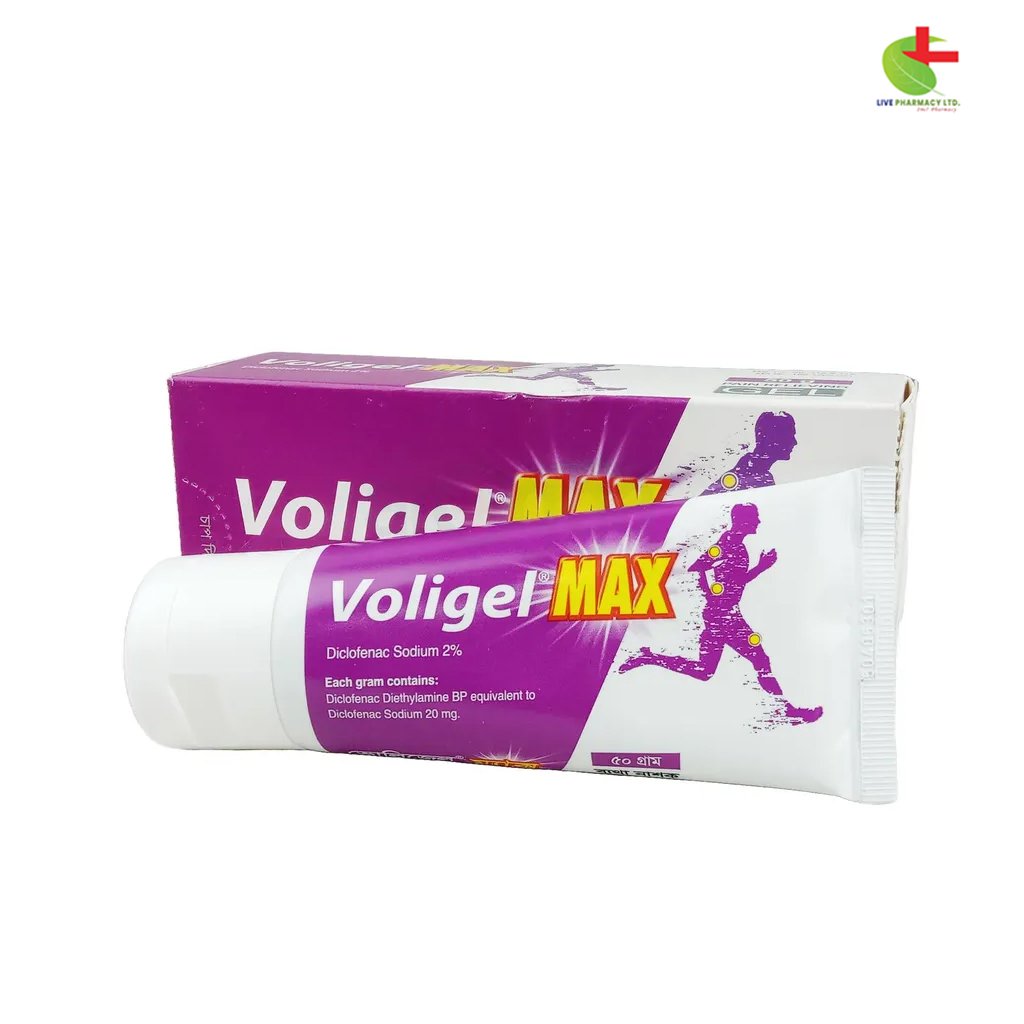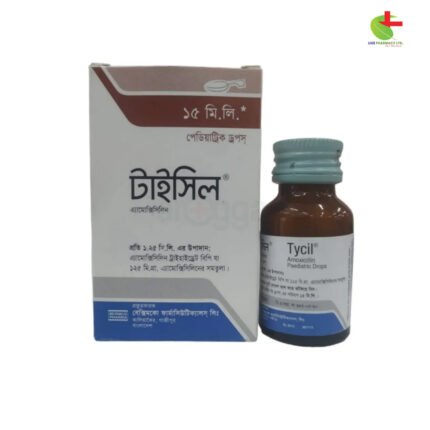Voligel Max
170.00৳ Tube (20 gm)
- Voligel Max is an effective NSAID cream for pain and inflammation relief.
- Contains Diclofenac Sodium, targeting inflammation, pain, and fever.
- Suitable for conditions like rheumatism, trauma, and post-surgical pain.
- Provides relief for arthritis, sprains, and localized discomfort.
- Apply as directed for effective management of symptoms.
 Brand
Brand
|
Beximco Pharmaceuticals Ltd |
|---|---|
 Generics
Generics
|
Diclofenac Sodium |
 Type
Type
|
Cream |
0
People watching this product now!
Description
Indications
- Rheumatology: Effective for inflammatory and degenerative rheumatism, including chronic polyarthritis, ankylosing spondylitis, osteoarthritis, and acute gout. Also addresses peri-articular rheumatic disorders.
- Surgery and Traumatology: Provides relief for sprains, bruises, dislocations, fractures, soft tissue injuries, and post-surgical recovery.
- Obstetrics and Gynecology: Treats primary dysmenorrhea, episiotomy recovery, adnexitis, endometritis, parametritis, salpingitis, and mastitis.
- Otorhinolaryngology: Used pre-operatively to manage pain, inflammation, and swelling.
- Dentistry: Reduces post-operative and post-traumatic pain, inflammation, and swelling.
- Other Uses: Manages pain and inflammation in urogenital tract surgeries and renal or biliary colic.
Pharmacology
Voligel Max contains Diclofenac Sodium, a powerful NSAID known for its anti-rheumatic, anti-inflammatory, analgesic, and antipyretic effects. It works by inhibiting prostaglandin synthesis, which reduces inflammation, pain, and fever. Diclofenac is rapidly absorbed, reaching peak plasma levels within 2 hours and is highly protein-bound. It undergoes first-pass metabolism in the liver.
Dosage & Administration
- Diclofenac FC Tablet: Adults: 75-150 mg daily in 2-3 doses after food. Reduce dose for long-term use.
- Diclofenac SR Tablet: Adults: 1 tablet daily with liquid at mealtimes; may increase to 150 mg. Children: 1-3 mg/kg body weight daily.
- Diclofenac Dispersible Tablet: Adults: 2-3 tablets daily, up to 150 mg. Children: Not generally recommended except for juvenile rheumatoid arthritis (1-3 mg/kg body weight). Dissolve in water before swallowing.
- Diclofenac TR Capsule: 1 capsule daily, preferably after meals.
- Diclofenac Suppository: Adults: 50 mg, 2-3 times daily, up to 150 mg.
- Diclofenac Injection: 1 ampoule daily, may increase to 2 in severe cases.
- Diclofenac Gel: Apply 2-4 g to affected areas 3-4 times daily. Rub in lightly; can be used alongside other Diclofenac forms.
Interaction
- Lithium & Digoxin: May increase plasma levels.
- Anticoagulants: Possible increased bleeding risk; monitor closely.
- Antidiabetic Agents: No significant interaction reported.
- Cyclosporin: Caution advised due to risk of nephrotoxicity.
- Methotrexate: Avoid concurrent use due to toxicity risk.
- Quinolone Antimicrobials: Potential for convulsions; use with caution.
- Other NSAIDs & Steroids: May increase side effects.
Contraindications
- Hypersensitivity to Diclofenac or any ingredients.
- Not suitable for individuals with a history of peptic ulcer, cutaneous epithelioma, or asthma exacerbated by NSAIDs.
Side Effects
- Mild, transient side effects such as epigastric pain, nausea, diarrhea, dizziness, or headache. Possible skin reactions include rash, eczema, and irritation from the gel.
Pregnancy & Lactation
- Use during pregnancy only if absolutely necessary; avoid during the first trimester. Diclofenac Sodium Gel is not recommended during pregnancy. Minimal Diclofenac may be present in breast milk, with no expected adverse effects on infants.
Precautions & Warnings
- Monitor for peptic ulceration or gastrointestinal bleeding. Avoid contact with eyes or mucous membranes; wash hands after application. Not to be ingested.
Therapeutic Class
- Drugs for Osteoarthritis, Rheumatoid Arthritis, NSAIDs
Storage Conditions
- Store in a cool, dry place, away from light, below 30°C. Keep out of reach of children.
Reviews (0)
Be the first to review “Voligel Max” Cancel reply
About brand
Shipping & Delivery













Reviews
There are no reviews yet.